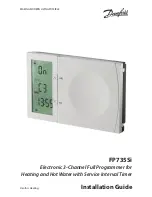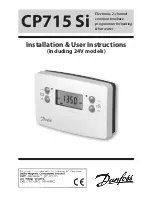
5.9 n: Special Adjustments
YASKAWA ELECTRIC
SIEP C710606 44B YASKAWA AC Drive T1000V Technical Manual
207
P
a
ra
me
te
r D
eta
ils
5
Normally there is no need to adjust n2-01 from the default setting. Make adjustments in the following cases:
• If hunting occurs, increase the set value in steps of 0.05 while checking the response.
• If response is low, decrease the set value in steps of 0.05 while checking the response.
■
n2-02, n2-03: Speed Feedback Detection Control (AFR) Time Constant 1, 2
Parameter n2-02 sets the time constant normally used by AFR.
Parameter n2-03 sets the time constant during Speed Search or when during regenerative operation the actual motor slip
exceeds 50% of the rated slip.
Note:
Parameter n2-02 cannot be set higher than n2-03 or an oPE08 error will result.
These parameters rarely need to be changed. Adjust settings only under the following conditions.
• If hunting occurs, increase n2-02. If response is low, decrease it.
• Increase the setting of n2-03 if overvoltage (ov) failures occur with high inertia loads at the end of acceleration or when
the load changes radically.
• When increasing n2-02, make sure to increase C4-02 (Torque Compensation Delay Time Constant 1) proportionally.
• When increasing n2-03, make sure to increase C4-06 (Torque Compensation Delay Time Constant 2) proportionally.
◆
n3: Overexcitation Deceleration
Overexcitation Deceleration (V/f Control and Open Loop Vector)
Overexcitation deceleration increases the flux during deceleration and allows shorter deceleration time settings than with
normal deceleration without the use of a braking resistor. Enabled by setting L3-04 = 4.
Notes on Overexcitation Deceleration
• As regenerative energy is mainly dissipated as heat in the motor, the motor temperature will rise if overexcitation
deceleration is applied frequently. In such cases, make sure the motor temperature does not exceed the maximum
allowable value or consider using a braking resistor option instead.
• The drive decelerates at the active deceleration time. Verify the deceleration time setting to avoid trouble with
overvoltage.
• When a Run command is entered during overexcitation deceleration, overexcitation operation is cancelled and the
drive will reaccelerate to the specified speed.
• Do not use overexcitation deceleration in combination with a braking resistor option.
• Overexcitation deceleration can not be used in Open Loop Vector for PM motors.
Use parameters n3-13 through n3-23 for adjusting overexcitation deceleration.
■
n3-13: Overexcitation Deceleration Gain
Applies a gain to the V/f pattern output value during overexcitation deceleration, thereby determining the level of
overexcitation. The drive returns to the normal V/f value after the motor has stopped or when it is accelerating to the
frequency reference.
The optimum setting for n3-13 depends on the motor flux saturation characteristics.
• Increase the gain by 1.25 to 1.30 to improve the breaking power of overexcitation.
• Reduce the value when the motor slip gets too high, which can trigger overcurrent (oC), motor overload (oL1), or drive
overload (oL2) faults. Alternatively reduce n3-21.
No.
Name
Setting Range
Default
n2-02
Speed Feedback Detection Control (AFR) Time Constant 1
0 to 2000 ms
50 ms
n2-03
Speed Feedback Detection Control (AFR) Time Constant 2
0 to 2000 ms
750 ms
No.
Name
Setting Range
Default
n3-13
Overexcitation Deceleration Gain
1.00 to 1.40
1.10
















































